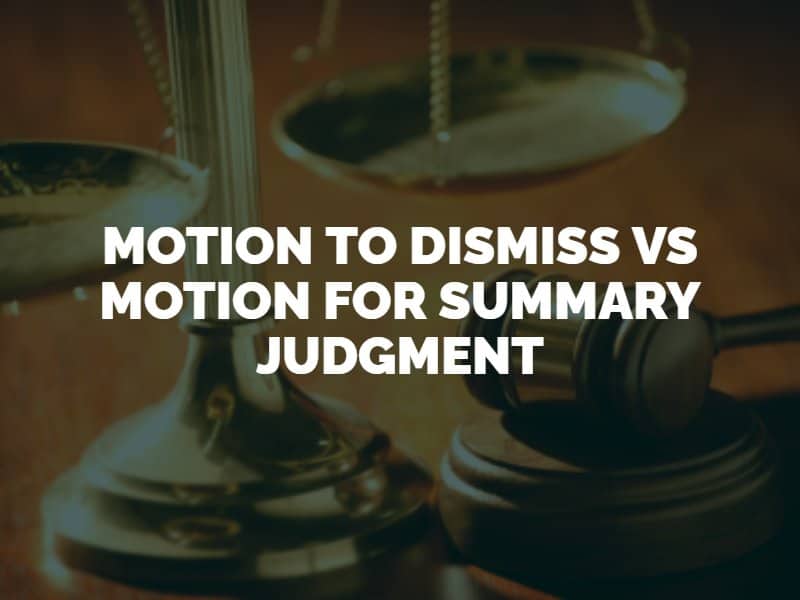If you are filing a legal claim against another party, you should be aware that they may have the opportunity to stop you from doing so. Through a motion to dismiss or motion for summary, your claim could be stopped in its tracks. This is an unfortunate reality, but that does not mean you are without recourse.
If you believe the defendant in your personal injury lawsuit will attempt a motion to dismiss or motion for summary, you need to arm yourself with information and legal resources. The best way to do this is to hire a Denver personal injury attorney to represent you. Though, you can also benefit from reading more about these two legal motions.

When a defendant asks the judge to dismiss a plaintiff’s case, they have initiated a motion to dismiss. The plaintiff typically files these motions immediately after a defendant is served a legal complaint. Though, a motion to dismiss can be filed at any point throughout the legal proceedings. This typically occurs when the plaintiff submits additional claims during a trial.
When the motion to dismiss is granted by the judge, the claim in question will not be looked at any further. If all claims are dismissed, the case ends in favor of the defendant. For plaintiffs across the board, this is the worst-case scenario. Therefore, it is imperative that you retain the services of a talented lawyer if you feel a motion to dismiss will be hard to overcome.
In instances where the only matter in question is whether someone abided by the law, a motion for summary may be filed. Through a motion for summary, the court is asked to provide a judgment on a case before the said case actually goes to trial. This usually occurs when there is nothing of material substance to be argued and, instead, a simple judgment of whether the law was broken must be decided.
The motion for summary is normally initiated after discovery has been completed. The motion will be granted when there is no questioning of the facts in the case. Usually, judges side with the plaintiff in such disputes, though defendants may also benefit from this action.
The primary difference between these two motions is that a motion to dismiss asks the judge to completely end the claim with no judgment, while the motion for summary asks to get the judgment before the case goes to trial. Both motions offer different outcomes, though either can lead to a personal injury claim offering little or no compensation.
If your case is dismissed, you will be unable to collect from the party you filed your claim against. That is why it is always necessary to have a professional defend you when a motion to dismiss is initiated. Similarly, a motion for summary could limit your ability to adequately prove your damages, lowering your ability to recover compensation.
To get the legal counsel you need to walk away with the best possible compensation, trust a lawyer from Fang Accident Lawyers. You can obtain a free case evaluation soon by contacting us.